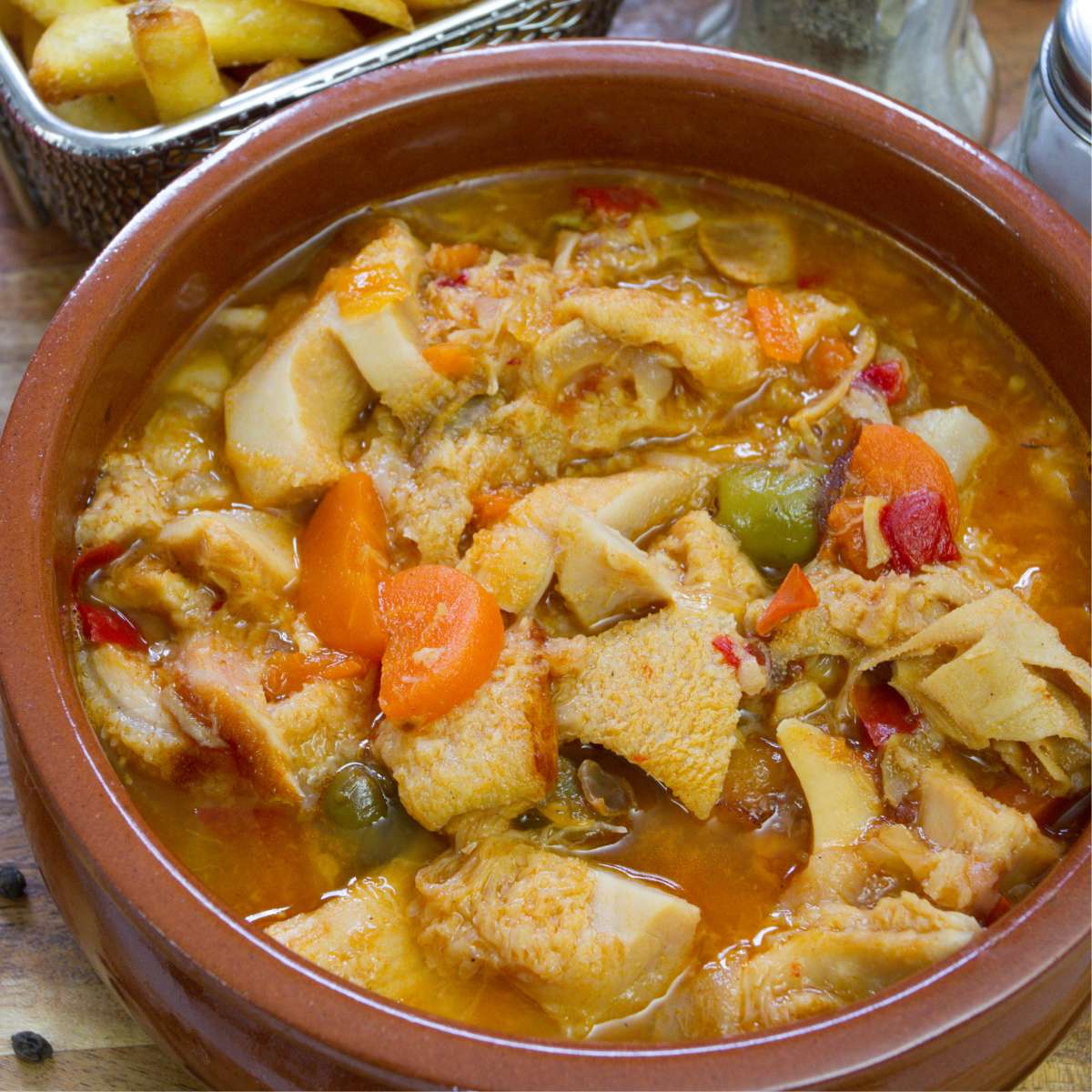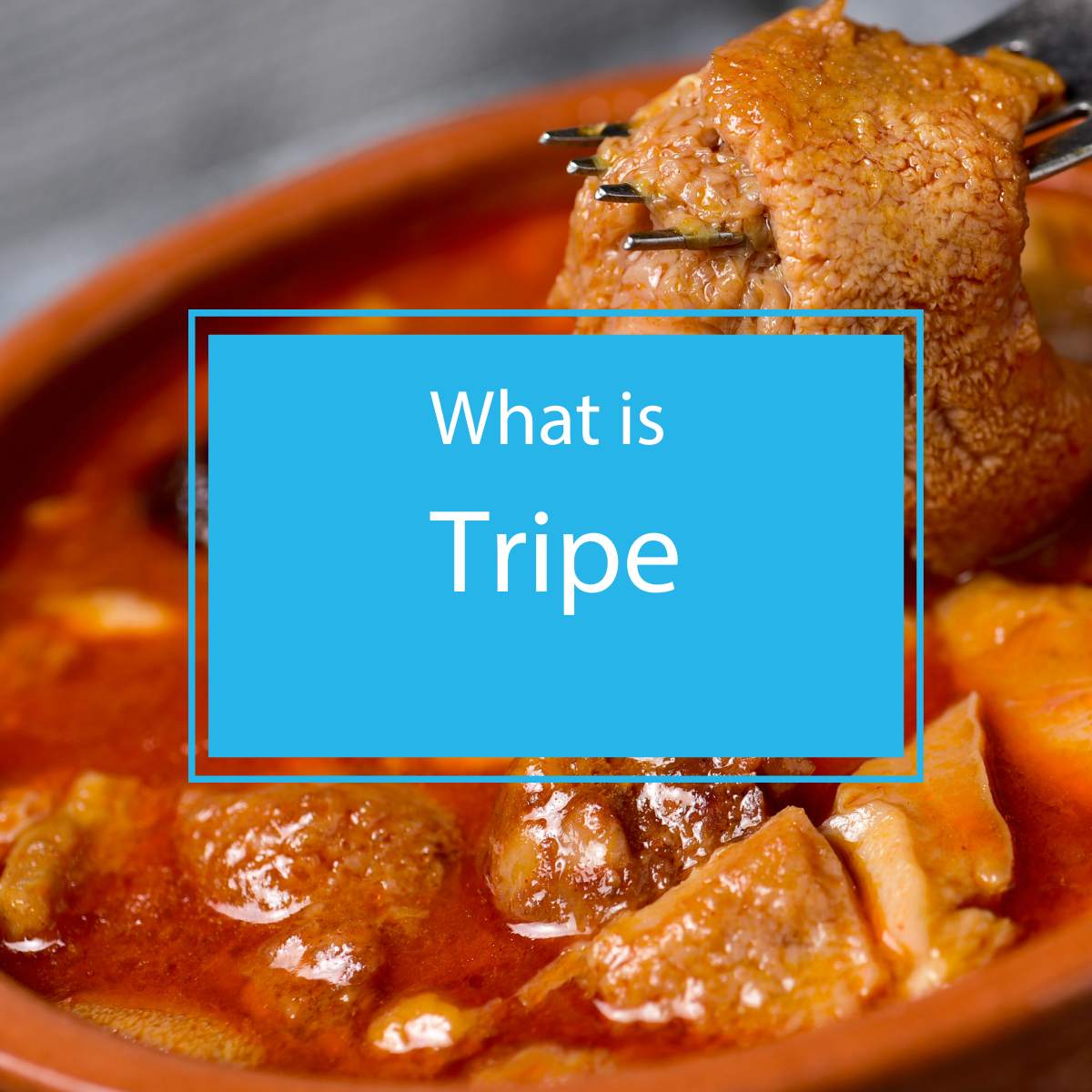Have you ever wondered, “What is tripe?” and why it’s found on the shelves of your local butcher or featured on the menu at trendy restaurants? Well, get ready to explore the world of tripe, a hidden gem in the culinary scene.
Tripe is the stomach lining of animals like cows and sheep, and it’s making a big comeback in both traditional and modern kitchens. It’s not just nutritious but also budget-friendly. Whether you’re exploring its health benefits or its sustainable qualities, tripe is a versatile food that can take your cooking to the next level.
From hearty stews to elegant dishes, tripe offers a unique flavor that can transform any meal. Keep reading to learn more about what makes tripe such a standout ingredient.
What is Tripe?
If you’ve ever set foot in a global market or been adventurous with your culinary tastes, you’ve likely encountered tripe. So, what is tripe? Often nestled among the specialty meat cuts, tripe is the edible lining from the stomachs of ruminants or various grazing animals, with beef tripe being the most widely consumed.
It’s a unique type of meat known for its distinctive chewy texture and incredible capacity to soak up the riot of flavors in hearty, well-spiced dishes.

But not all tripe is created equal. The varying textures and flavors sprout from four main types—blanket, honeycomb, omasum, and abomasum tripe.
These range from the smooth flatness of blanket tripe to the maze-like pattern of honeycomb tripe, each bringing its unique twist to the table.
What to Expect: The Texture and Taste of Tripe
Tripe’s tough texture often surprises newcomers. Yes, it can be as challenging as chewing a leather shoe if not prepared correctly. However, with patience and culinary skill, you can transform tripe into a tender, melt-in-your-mouth delicacy. This requires slow stewing at low temperatures—a process where patience is indeed essential.
Moving on to tripe’s unassuming mild flavor of tripe; think of it as a blank canvas waiting for the splash of colors that spices and herbs bring.

Whether it’s imbued with the robust flavors of a vibrant curry, simmered in a hearty Italian sauce, or seasoned with a zestful pinch of herbes de Provence, tripe is exceptionally versatile. This allows you to direct its flavor profile to suit any dish you’re inspired to create.
Understanding the Potential Health Benefits of Tripe
Tripe isn’t just a unique dish on adventurous menus; it’s also packed with health benefits that might surprise you. Here’s a closer look at what this underappreciated food can offer:
- Prevents Anemia: Rich in vitamin B12, tripe helps prevent anemia, a condition that can make you feel exhausted and weak. Adding tripe to your diet can keep your blood cells healthy and vibrant.
- Boosts Red Blood Cell Production: The high vitamin B12 content in tripe not only combats anemia but also promotes the production of red blood cells, supporting overall vitality.
- Strengthens Bones: Tripe is a good source of calcium and phosphorus, two minerals essential for strong bones. Regular consumption can help maintain bone health.
- Helps with Weight Loss: High in protein and low in calories, tripe is excellent for those trying to manage their weight. It fills you up without adding extra calories, making it easier to control your appetite.
- Supports Overall Health: Beyond these specific benefits, tripe offers a nutritious option that can contribute to a balanced diet.
Tripe might be overlooked, but its nutritional profile makes it a worthwhile addition to your meals, especially if you’re looking for food that supports blood health, bone strength, and weight management.
Tripe in the Kitchen: Cooking Techniques and Tips
Tripe might sound mysterious, but it’s actually a flavorful and versatile ingredient once you know how to cook it. Here’s a straightforward guide to help you become a tripe expert in your own kitchen.

- Clean the Tripe: Start by thoroughly rinsing the tripe under cold water. This step is crucial whether it’s pre-cleaned or straight from the butcher, as it helps remove any residual impurities.
- Cook It Slow: Tripe requires a gentle cooking approach. Avoid quick cooking methods like frying. Instead, opt for slow cooking techniques such as boiling or stewing to make it tender.
- Boiling Tripe: Place the tripe in a pot of boiling, salted water. This initial boil is essential to soften the tripe and reduce its chewiness, making it more enjoyable to eat.
- Flavor with Herbs and Spices: After boiling, enhance the tripe by stewing it with a mix of aromatic herbs and spices. This will infuse the tripe with rich flavors that complement its unique texture.
- Try Unprocessed Tripe for Bolder Flavor: If you’re adventurous, choose unprocessed tripe. It requires more thorough cleaning, but the robust flavor can be worth the extra effort.
By following these simple steps, you can transform tripe from an intimidating ingredient to a delicious and hearty component of your meals.
Selection and Cleaning Tips for Tripe
Tripe can be a delicious addition to your meals, but picking and preparing it properly is key. Here’s how to select and clean tripe easily and effectively.
Selecting the Best Tripe
When shopping for tripe, freshness is your top priority. Here are a few pointers:
- Look for Freshness: Choose tripe that is pale and has little to no odor. These are signs of freshness and good quality.
- Know the Types: Tripe comes in several forms, such as flat tripe, honeycomb tripe, omasum, and abomasum. Each has a unique texture and cooking requirement.
- Buy from Trusted Sources: If possible, buy fresh tripe directly from a butcher you trust rather than prepackaged options. This often ensures better quality and freshness.
Cleaning Tripe Properly
Even if the tripe looks clean, thorough washing is crucial:
- Rinse Well: Start by rinsing the tripe under cold running water. Make sure to wash all the crevices and folds.
- Trim and Treat: For fresh tripe, trim any excess fat. A vinegar rinse can also help to further clean and remove any residual smell.
- Prepare for Cooking: Once cleaned, your tripe is ready to be cooked in your favorite recipes. Proper cleaning not only improves the taste but also ensures it’s safe to eat.
By following these simple steps, you can ensure that your tripe is fresh, clean, and ready to be transformed into a delicious dish. Happy cooking!
Must-Try Tripe Dishes from Around the Globe
Tripe is a versatile ingredient used in various delicious dishes around the world. Each culture brings its own flair to cooking tripe, turning it into something special. Here’s how different countries showcase tripe in their traditional meals:
Italy: Trippa alla Romana
This Italian favorite is a tomato-based dish featuring tripe cooked with mint and topped with Parmesan cheese. It’s a rich and comforting meal that perfectly balances fresh and savory flavors.
United Kingdom: Tripe and Onions
In the UK, tripe is often served cold with onions and seasoned with vinegar. This simple, traditional dish highlights the subtle flavors of tripe without overpowering it.
Vietnam: Pho
Tripe is a key ingredient in Pho, a beloved Vietnamese noodle soup. It adds a soft, silky texture to the rich, aromatic broth and vegetables in Pho, making each spoonful a delight. For more insights on the meat accompaniments of Pho, check out our Pho meat guide.
China: Spicy Stewed Tripe with Scallions
This dish is a fiery treat for the bold. It combines the warmth of spices with the freshness of scallions, creating a comforting yet intense experience for anyone looking to add some heat to their meal.
Philippines: Kare Kare
Kare Kare is a cherished Filipino dish where tripe is cooked in a creamy, nutty sauce alongside a variety of vegetables. This combination creates a harmonious blend of flavors and textures that is both unique and immensely satisfying.
Mexico: Menudo
Menudo is a spicy Mexican soup known for its healing properties, often enjoyed after a night out. It’s made with chilies, hominy, and tripe, creating a bold and satisfying dish that’s both tasty and comforting.

Conclusion
As we wrap up our look at tripe, it’s clear that this ingredient is more than just a tasty addition to meals—it’s packed with nutrients that support muscle and bone health, making it an excellent choice for today’s health-aware eaters.
Tripe has a rich history and a bright future in kitchens around the world. Whether it’s the star of Vietnamese Pho or a key player in Italian trippa alla romana, tripe adapts to any flavor profile and elevates dishes with its unique texture.
Thinking about trying tripe? You’re in for a culinary adventure that supports sustainable eating practices. Go ahead, experiment with tripe in your kitchen, and let it spice up your next meal with a little excitement.
FAQ
Can tripe be frozen for later use?
Yes, tripe can be frozen. It should be cleaned and blanched before freezing to preserve its texture and flavor. Properly stored, tripe can last several months in the freezer.
Is tripe suitable for all diets?
Tripe is suitable for most non-vegetarian diets. However, due to its origin and texture, it might not be suitable for everyone’s taste or dietary preferences.
What makes organ meats like tripe increasingly popular?
Organ meats like tripe are gaining popularity due to their nutritional benefits, affordability, and versatility in cooking. They are also considered more sustainable, as using all parts of an animal reduces waste.
How can eating tripe help tackle food waste?
Eating tripe helps reduce food waste by utilizing parts of the animal that might otherwise be discarded. This approach supports a more sustainable and ethical use of animal resources.
Is tripe an affordable food option?
Yes, tripe is generally more affordable than other cuts of meat. Its low cost makes it a popular choice for budget-conscious consumers looking to include nutritious, protein-rich options in their diet.

